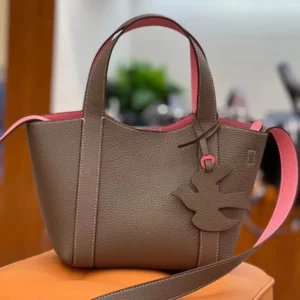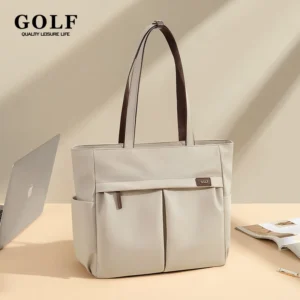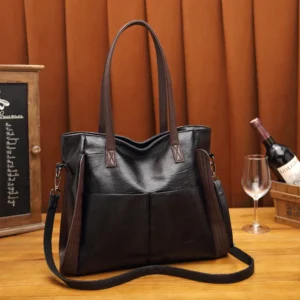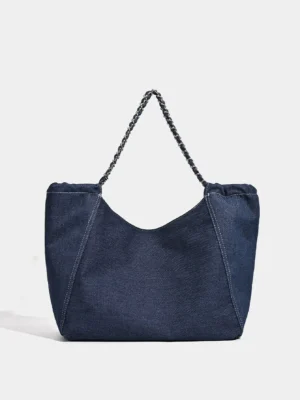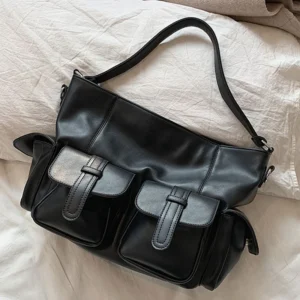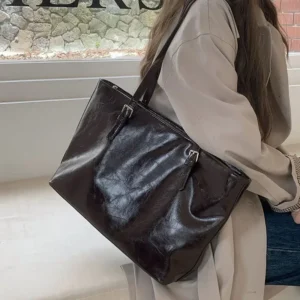Understanding Leather Types and Their Core Properties
When investing in a quality leather product, understanding what you’re paying for becomes essential. Real leather refers to animal hide that has undergone a tanning process to preserve and strengthen it, while vegan leather encompasses synthetic or plant-based alternatives designed to mimic leather’s appearance and properties without using animal products.
Durability stands as a critical factor when evaluating leather goods, especially for professional products like work bags that face daily use and stress. This resilience stems from several key elements: the fundamental material structure, manufacturing techniques, and ongoing maintenance practices. For premium products that serve as daily companions in professional settings, understanding these durability differences becomes particularly important.
It’s worth noting that both real and vegan leather categories contain significant quality variations. Just as selecting a timeless classic leather briefcase requires attention to quality indicators, both material categories offer options ranging from exceptional to disappointing in terms of longevity. The difference between full-grain leather and bonded leather is as substantial as the difference between premium plant-based vegan leather and budget synthetic alternatives.
Before making an investment in a professional leather product, understanding the best leather briefcases and their vegan counterparts requires examining how these materials perform over time in real-world conditions.
Real Leather: Types and Their Durability Characteristics
Real leather varies dramatically in durability based on its type, with four main categories offering distinctly different performance characteristics:
Full-grain leather represents the highest quality and most durable option. It preserves the entire grain layer with its natural fiber structure intact, creating a dense, tightly packed material highly resistant to wear. This unaltered structure maintains the hide’s natural strength and breathability. With proper care, full-grain leather products often last 15-30+ years, developing a rich patina while maintaining structural integrity.
Top-grain leather undergoes light sanding to remove imperfections, making it more uniform in appearance than full-grain. While this processing slightly reduces strength, top-grain remains quite durable, typically lasting 10-20 years with proper care. The sanding process removes some of the most densely packed fibers but creates a more consistent appearance.
Genuine leather is created from the lower splits of the hide after the top layers are removed. With a less dense fiber structure, genuine leather offers significantly reduced durability, generally lasting 3-8 years before showing substantial wear. This category often includes corrected grain leathers with heavy surface treatments to mask natural imperfections.
Bonded leather represents the lowest quality option, composed of leather scraps and fibers bonded together with adhesives. With minimal intact natural fiber structure, bonded leather typically lasts only 1-3 years before peeling or cracking becomes evident.
The animal source also impacts durability characteristics. Cowhide offers excellent tensile strength and durability, goatskin provides superior flexibility while maintaining good strength, and sheep leather delivers exceptional softness but with reduced durability.
| Leather Type | Tensile Strength | Abrasion Resistance | Expected Lifespan |
|---|---|---|---|
| Full-grain | Excellent | Excellent | 15-30+ years |
| Top-grain | Very good | Very good | 10-20 years |
| Genuine | Moderate | Fair | 3-8 years |
| Bonded | Poor | Poor | 1-3 years |
The tanning method further influences durability. Vegetable-tanned leather develops a rich patina and maintains excellent structural integrity over decades, while chrome-tanned leather offers superior water and stain resistance but may not develop the same character with age.
For professionals seeking maximum longevity, exploring full-grain messenger bag options provides access to the most resilient leather products available. When evaluating various durable leather briefcase options, understanding these quality distinctions becomes essential for making an informed investment.
Vegan Leather: Materials and Their Durability Profiles
Vegan leather encompasses a diverse range of materials with varying durability characteristics, generally falling into two main categories: synthetic-based and plant-based alternatives.
Synthetic-based vegan leathers dominate the market, with polyurethane (PU) and polyvinyl chloride (PVC) being the most common:
Polyurethane (PU) leather consists of a fabric backing coated with a polymer layer. Modern PU offers reasonable flexibility and moderate durability, typically lasting 2-5 years with regular use. Higher-quality PU formulations incorporate durability enhancers that resist peeling and cracking, though the material generally begins showing wear at stress points after sustained use.
Polyvinyl chloride (PVC) provides excellent water resistance and initial durability. However, it lacks breathability and tends to crack after repeated flexing, especially in changing temperatures. PVC typically lasts 1-3 years before showing significant deterioration.
Plant-based vegan leathers represent innovative alternatives with improving durability profiles:
Piñatex (pineapple leaf fiber) offers good tensile strength and abrasion resistance, with premium versions lasting 4-7 years. Its naturally fibrous structure provides tear resistance superior to many synthetic options.
Cactus leather delivers excellent flexibility and puncture resistance due to its unique molecular structure. High-quality cactus leather can maintain integrity for 5-8+ years with proper care.
Apple leather combines apple waste with PU binders, creating a more sustainable material with durability similar to mid-range PU leather (3-5 years).
Mycelium (mushroom) leather offers promising durability with natural flexibility and strength, though commercial versions are still evolving in terms of longevity.
Manufacturing quality significantly impacts vegan leather durability. Premium versions feature multiple layers, reinforced backing, and specialized coatings that enhance wear resistance. Budget versions often use thinner materials with minimal structural support, leading to premature failure.
The technology behind vegan leather has advanced considerably over the past decade. Early versions were notorious for cracking and peeling within months, while today’s premium professional vegan leather bags incorporate specialized polymers and multi-layer construction techniques that dramatically improve longevity.
For professionals seeking animal-free alternatives, exploring vegan leather work tote options reveals how these materials perform in demanding professional settings. The best modern vegan leathers balance aesthetic appeal with significantly improved functional durability.
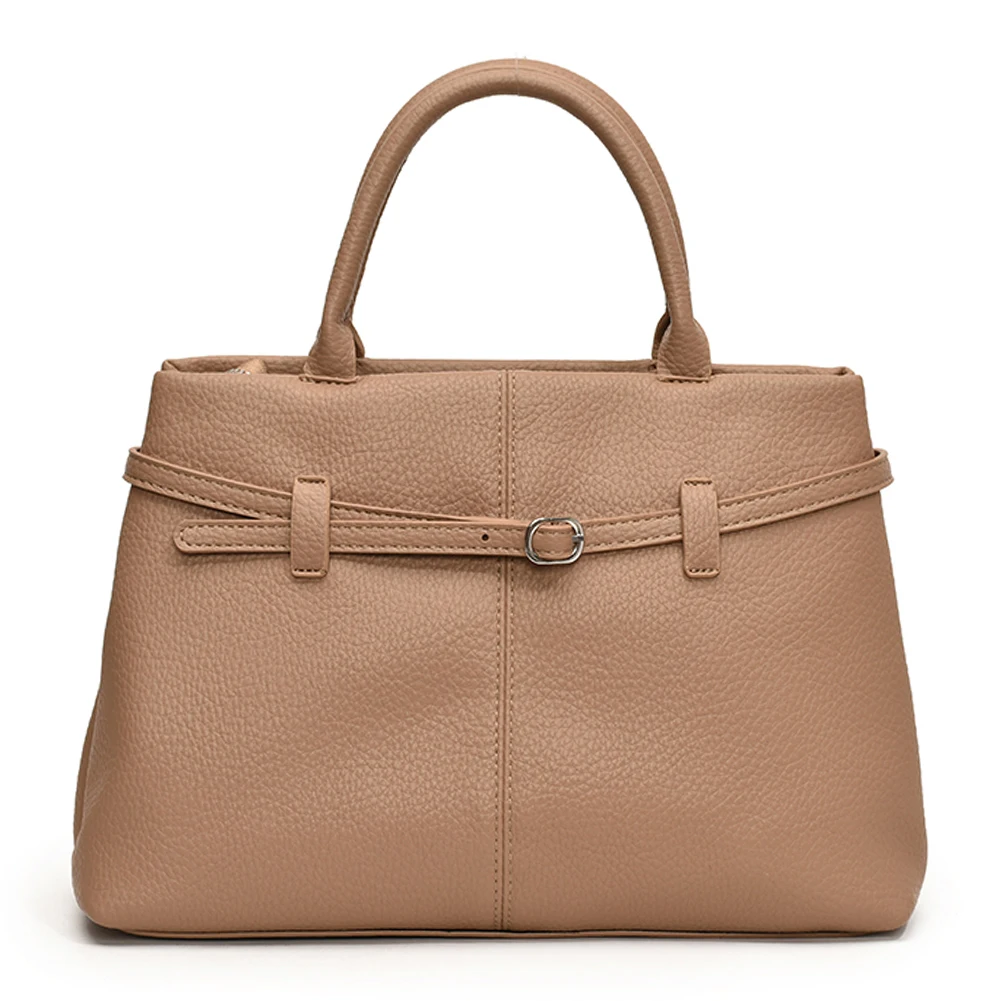
Head-to-Head Durability Comparison: Key Performance Metrics
When comparing real and vegan leather durability, several specific performance metrics reveal meaningful differences:
| Durability Metric | Premium Real Leather | Premium Vegan Leather | Budget Real Leather | Budget Vegan Leather |
|---|---|---|---|---|
| Tensile Strength | Excellent (25-30 MPa) | Good (15-20 MPa) | Fair (10-15 MPa) | Poor (5-10 MPa) |
| Abrasion Resistance | Excellent (20,000+ rubs) | Good (10,000-15,000 rubs) | Fair (5,000-8,000 rubs) | Poor (2,000-4,000 rubs) |
| Flex Resistance | Excellent (100,000+ flexes) | Good (50,000-80,000 flexes) | Fair (20,000-40,000 flexes) | Poor (5,000-15,000 flexes) |
| Puncture Resistance | Very Good | Fair | Fair | Poor |
| Edge Tear Strength | Excellent | Fair | Good | Poor |
Tensile strength measures a material’s resistance to breaking under tension. Full-grain leather excels here due to its intact natural fiber structure, with strength ratings often exceeding 25 MPa (megapascals). Premium vegan leathers typically achieve 15-20 MPa, while budget synthetic options may measure below 10 MPa. This difference becomes evident when handles and straps are subjected to heavy loads.
Abrasion resistance determines how well a material withstands friction. Full-grain leather typically withstands 20,000+ rubs on standard testing equipment before showing significant wear, while premium vegan leathers generally achieve 10,000-15,000 rubs. Budget options in both categories show wear much earlier, with low-quality synthetic leather sometimes showing surface damage after just 2,000-4,000 rubs.
Flex resistance measures a material’s ability to bend repeatedly without cracking—particularly important for items with folding parts or stress points. Premium real leather maintains integrity through 100,000+ flexes in laboratory testing, while even high-quality vegan alternatives typically begin showing stress lines after 50,000-80,000 flexes. This difference becomes particularly relevant in daily-use items like bag handles and shoes.
Puncture and tear resistance generally favor real leather, especially full-grain and top-grain varieties, due to their interwoven fiber structure. Vegan leathers rely more on coating thickness and backing material strength for puncture resistance, with significant variation between budget and premium options.
Usage context dramatically impacts which metrics matter most. For a professional briefcase, flex resistance at the handles and abrasion resistance at the bottom edges may be most critical. For a wallet, edge tear strength might be the determining factor.
The practical differences in everyday faux leather vs real daily use become most apparent at stress points and high-friction areas. While premium versions of both materials hold up well to normal use, real leather typically maintains structural integrity longer under challenging conditions.
Aging and Wear: How Each Material Changes Over Time
The aging process reveals perhaps the most significant difference between real and vegan leather materials. With real leather, particularly full-grain and top-grain varieties, aging often enhances rather than degrades appearance—a process leather enthusiasts call developing “patina.” This natural evolution includes:
- Gradual darkening and color enrichment in areas of frequent handling
- Development of a subtle sheen from natural oils in the leather
- Softening and increased pliability while maintaining strength
- Minor surface marks that blend into the overall character
In contrast, vegan leather tends to maintain its original appearance longer initially but then deteriorates more suddenly:
- Color stability for the first few years (sometimes better than real leather)
- Minimal change in texture until wear begins
- Potential sudden failure points where peeling or cracking occurs
- Surface damage that typically remains visible rather than blending in
Common aging issues for real leather include:
– Drying out if not properly conditioned
– Color fading with prolonged sun exposure
– Scratches (though many can be buffed or blend in over time)
– Staining from water or oils (particularly visible on lighter colors)
Common aging issues for vegan leather include:
– Surface cracking at flex points
– Peeling or delamination of the outer coating
– Corner and edge wear that exposes backing material
– Permanent creasing that doesn’t relax
Environmental factors dramatically accelerate these aging processes. Direct sunlight damages both materials but affects them differently—leather typically fades and dries, while many vegan leathers may crack or become brittle. Heat exposure can cause synthetic leathers to soften excessively or even deform, while extreme cold makes both materials stiffer but poses a greater cracking risk for vegan options.
Over time, premium real leather often “ages gracefully,” developing character while maintaining functionality. In contrast, even well-made vegan leather eventually reaches a point where deterioration accelerates, particularly at stress points. Understanding how long faux leather bags last helps set realistic expectations for these materials.
Environmental Factors Affecting Durability
Environmental conditions significantly impact how both leather types perform over time, with each material responding differently to specific exposures:
Heat and direct sunlight affect both materials but through different mechanisms. Real leather can dry out, stiffen and fade when exposed to excessive heat and UV radiation, potentially leading to cracking if left untreated. However, proper conditioning can often restore moisture. Vegan leather, particularly PVC-based options, may warp, soften excessively or even melt under extreme heat. UV exposure breaks down the molecular structure of synthetic polymers over time, leading to brittleness that conditioning cannot reverse.
Cold temperatures cause both materials to stiffen temporarily. Real leather typically regains flexibility as it warms without permanent damage. Vegan leather, especially budget options, faces higher risk of cracking when flexed in cold conditions as the synthetic polymers become brittle and less able to withstand stress.
Humidity affects each material differently. High humidity environments pose mold and mildew risks for real leather, potentially causing permanent staining if not addressed promptly. While vegan leather resists mold growth better, extended humidity exposure can degrade adhesives in some synthetic leathers, leading to delamination where layers separate.
Water exposure presents contrasting vulnerabilities. Real leather absorbs water, potentially causing staining, shape distortion, and if not properly dried, rotting of the natural fibers. Vegan leather generally offers superior initial water resistance, repelling rather than absorbing moisture. However, repeated soaking can eventually penetrate seams or damage the protective coating, leading to bubbling or separation from the backing material.
Proper storage dramatically extends the lifespan of both materials. Ideal conditions include:
– Moderate, stable temperature (60-75°F)
– Moderate humidity (40-50%)
– Storage away from direct sunlight
– Adequate air circulation
– Support to maintain proper shape
Understanding the definitive guide storing leather bags helps preserve these investments regardless of material. For professionals concerned about weather exposure, water-resistant vegan leather briefcases offer practical advantages for certain climates.
Maintenance Requirements and Their Impact on Longevity
Maintenance requirements represent another significant difference between real and vegan leather, with proper care dramatically impacting longevity for both materials:
Real Leather Maintenance:
– Requires regular conditioning every 3-6 months to restore natural oils
– Needs protection from water exposure (waterproofing treatments help)
– Benefits from specialized cleaning products that won’t strip natural oils
– Requires occasional polishing to maintain appearance
– May need professional treatment for serious stains or damage
Vegan Leather Maintenance:
– Typically requires simpler cleaning with mild soap and water
– Needs protection from sharp objects and abrasive surfaces
– Benefits from occasional application of vinyl/plastic conditioners to prevent drying
– Requires prompt attention to any peeling or cracking to prevent spreading
– Generally cannot be professionally restored once structural damage occurs
For real leather, regular conditioning with appropriate leather care products can extend lifespan by 30-50%. This maintenance prevents the natural fibers from drying out, cracking, and losing structural integrity. Without proper conditioning, even premium leather will eventually dry, crack, and deteriorate.
Vegan leather maintenance is generally less demanding but equally important for maximizing lifespan. While it doesn’t require conditioning as frequently, regular cleaning prevents dirt buildup that can abrade the surface coating. Protective sprays can help maintain the outer layer that protects the underlying structure.
The impact of neglected maintenance differs between materials. Unconditioned real leather gradually dries out, losing flexibility before developing visible cracks. Neglected vegan leather often maintains its appearance until the protective coating fails, at which point deterioration accelerates rapidly.
For busy professionals seeking low-maintenance options, understanding the ultimate guide faux leather bag care helps maximize product longevity with minimal effort. The key difference is that real leather requires more regular, preventative care, while vegan leather maintenance focuses more on cleaning and protecting from damage.
Repairability: When Damage Occurs
The ability to repair damage represents one of the most significant long-term durability advantages of real leather over most vegan alternatives:
Real leather offers numerous repair options because it’s a natural material that can be worked with traditional leathercraft techniques:
– Minor scratches can often be buffed out or blended with conditioner
– Small tears can be repaired with specialized leather glues and patches
– Professional repair services can replace sections while maintaining structural integrity
– Edges can be refinished and resealed
– Color can be restored with appropriate dyes
Vegan leather presents more limited repair possibilities:
– Surface scratches typically remain permanent
– Tears or cracks usually cannot be effectively repaired
– Delamination (separation of layers) is generally irreparable
– Edge damage typically cannot be refinished
– Professional repair services rarely work with synthetic leathers
This repairability difference significantly impacts overall lifespan calculations. A high-quality real leather item may require multiple minor repairs throughout its life but can continue functioning for decades. Most vegan leather items, once damaged beyond surface cleaning, have reached the end of their functional lifespan.
For professional items used daily, this repairability factor becomes particularly important. A premium leather briefcase may show wear after several years, but those worn edges, handles, or corners can often be professionally restored to extend functional life. With synthetic alternatives, similar wear typically means replacement is necessary.
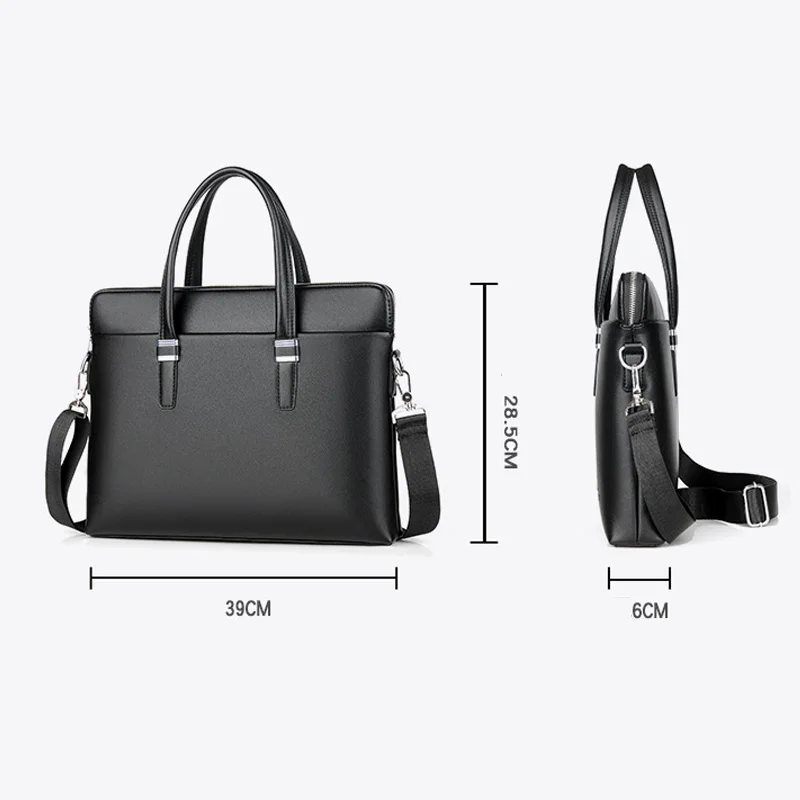
Cost Analysis: Investment vs. Longevity
When evaluating the true cost of leather goods, examining the relationship between initial investment and expected lifespan reveals interesting value propositions:
| Material Type | Initial Cost Range | Average Lifespan | Cost Per Year |
|---|---|---|---|
| Premium Full-Grain Leather | $200-500+ | 15-25+ years | $8-33/year |
| Mid-Range Top-Grain Leather | $150-300 | 8-15 years | $10-38/year |
| Genuine Leather | $80-150 | 3-8 years | $10-50/year |
| Premium Vegan Leather | $120-250 | 4-8 years | $15-63/year |
| Budget Vegan Leather | $40-100 | 1-3 years | $13-100/year |
This “cost per year of use” calculation often reveals that higher-quality items, despite larger initial investments, frequently offer better long-term value. A $350 full-grain leather briefcase lasting 15+ years costs roughly $23 per year of use, while a $100 budget vegan alternative lasting 2 years costs $50 per year.
Usage intensity dramatically affects this equation. For daily professional use where appearance matters, premium materials in both categories justify their higher costs through extended presentable lifespans. For occasional use items, mid-range options may provide better value.
For professionals seeking value without premium pricing, affordable quality leather briefcases balance initial investment with respectable longevity. The key is identifying products that utilize good materials without unnecessary premium pricing.
Brown Leather Work Tote, Large Leather Work Tote
$194.38 Select options This product has multiple variants. The options may be chosen on the product pageLeather Laptop Work Tote, Tan Leather Work Tote, Women's Leather Work Tote, Zippered Leather Work Tote
Price range: $223.62 through $237.97 Select options This product has multiple variants. The options may be chosen on the product pageBlack Leather Satchel, Brown Leather Satchel, Vegan Leather Work Tote
Price range: $69.58 through $73.23 Select options This product has multiple variants. The options may be chosen on the product pageCanvas & Leather Messenger Bag, Leather Commuter Tote
$80.41 Select options This product has multiple variants. The options may be chosen on the product pageBlack Leather Messenger Bag, Black Leather Work Tote, Faux Leather Work Tote
$101.88 Select options This product has multiple variants. The options may be chosen on the product pageBlack Leather Work Tote, Faux Leather Work Tote, Women's Leather Business Tote
Price range: $88.81 through $93.85 Select options This product has multiple variants. The options may be chosen on the product page
When calculating long-term value, also consider:
– Reduced replacement frequency (less shopping time)
– Professional appearance maintenance throughout ownership
– Potential repair costs for real leather
– Environmental impact of frequent replacements
Which is Right for You? Decision Making Framework
Choosing between real and vegan leather ultimately depends on aligning material characteristics with your specific needs and values:
For daily professional use over many years, full-grain leather typically offers superior durability, aging characteristics, and repairability. The initial investment is higher, but the per-year cost often proves lower for those planning long-term ownership. This option suits professionals who:
– View their work bag as a long-term investment
– Appreciate developing patina and character
– Are willing to perform regular maintenance
– Value repairability when damage occurs
For style-conscious professionals with moderate durability needs, premium vegan leather offers a compelling alternative. With good care, these materials provide 4-8 years of service with less maintenance. This option works well for those who:
– Prefer animal-free products
– Want good water resistance with minimal maintenance
– Prioritize consistent appearance over patina development
– Plan to replace accessories every few years
For those with changing style preferences, mid-range options in either category may make more sense. Rather than investing in a lifetime piece, these professionals can enjoy good performance for several years before updating to new styles.
Budget considerations naturally impact these decisions. While premium full-grain leather offers excellent long-term value, it requires substantial initial investment. For those with immediate budget constraints, quality vegan options or mid-range real leather can provide reasonable durability at more accessible price points.
Usage intensity should heavily influence your choice. A lawyer carrying case files daily needs different durability characteristics than someone using a bag occasionally for client meetings. Consider how frequently the item will be used, the typical load it will carry, and the environmental conditions it will face.
For those seeking proven durability in professional settings, leather work totes demonstrate how traditional materials perform under regular use.
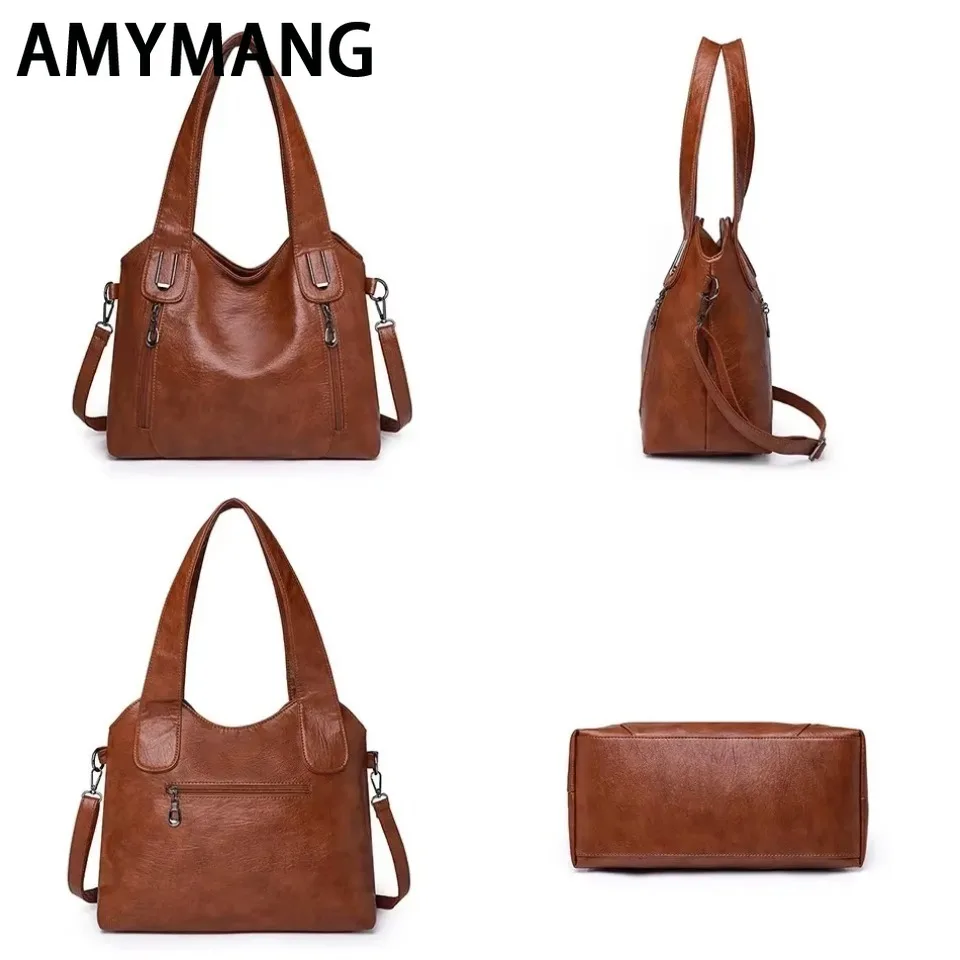
Modern Innovations Improving Vegan Leather Durability
Recent technological advances have significantly improved vegan leather durability, narrowing the historical gap with premium real leather:
New bio-based polymers enhance flexibility and crack resistance in plant-derived vegan leathers. Unlike earlier PVC-based alternatives that would crack after repeated flexing, these advanced polymers maintain integrity through thousands of flex cycles. Cactus leather, for example, incorporates specialized molecular structures that allow repeated bending without structural degradation.
Multi-layer construction techniques have revolutionized vegan leather durability. Premium options now feature:
– Reinforced core layers that enhance structural stability
– Microporous surface coatings that improve breathability while maintaining water resistance
– Textured finishes that hide minor scratches similar to real leather
– Enhanced edge finishing that resists the delamination common in earlier generations
Improved backing materials address one of the most common failure points in synthetic leathers—separation of the outer coating from its textile backing. Advanced nonwoven substrates create stronger bonds with surface coatings while maintaining flexibility.
Surface treatments significantly boost abrasion resistance in modern vegan leathers. Silicone-based finishes and nano-coatings increase surface durability by 30-50% compared to previous generations, allowing these materials to withstand the friction that occurs in daily use.
While these innovations have dramatically improved vegan leather performance, challenges remain. Most notably, repair technologies for synthetic materials haven’t advanced as quickly as the materials themselves. Once damaged beyond surface cleaning, most vegan leather items still cannot be effectively repaired.
For professionals interested in the latest generation of non-animal alternatives, exploring non-leather work bags reveals how these innovations perform in professional settings. These advancing technologies continue to close the durability gap, offering increasingly viable alternatives for durability-conscious consumers.


